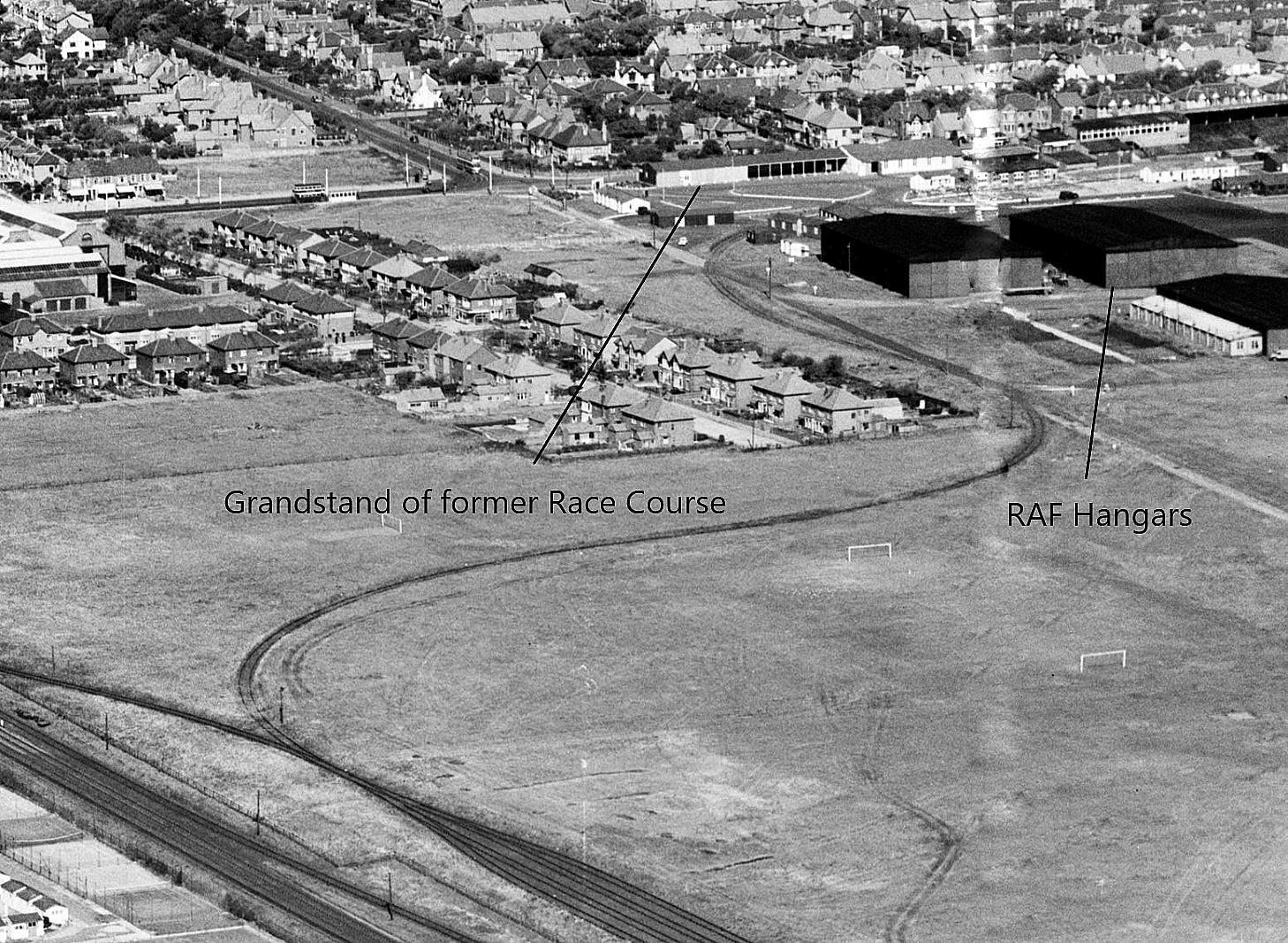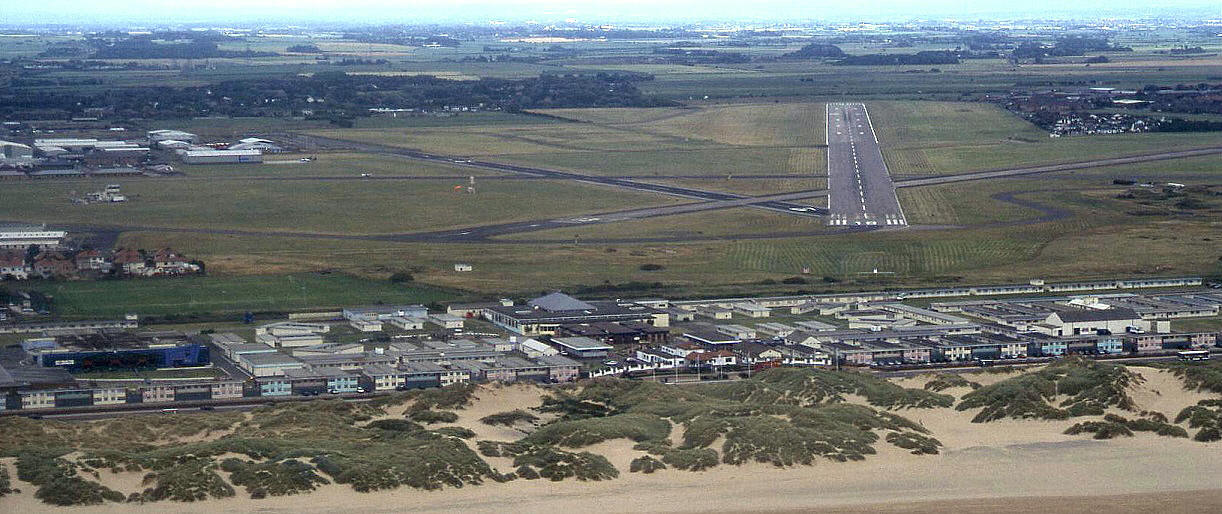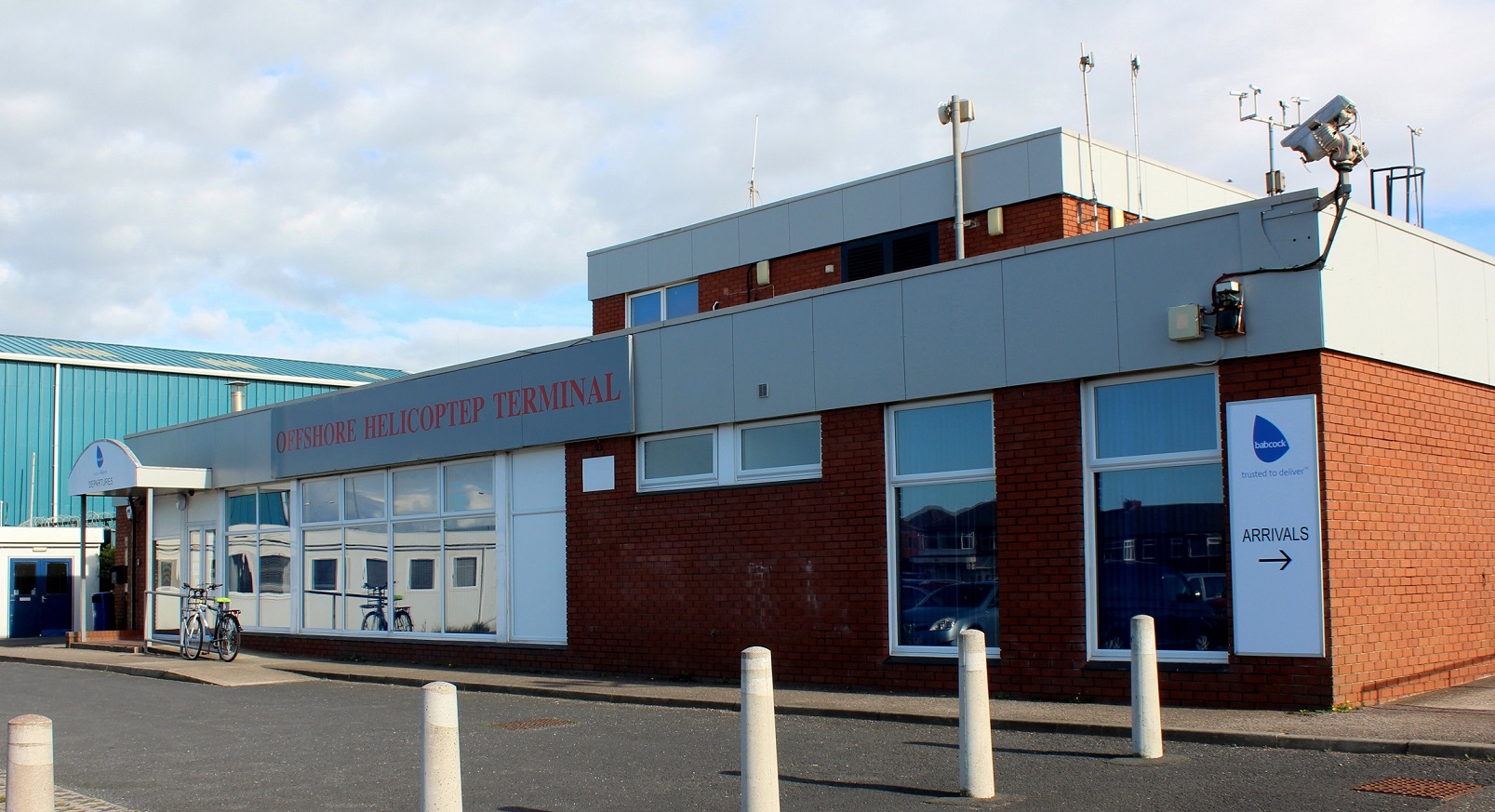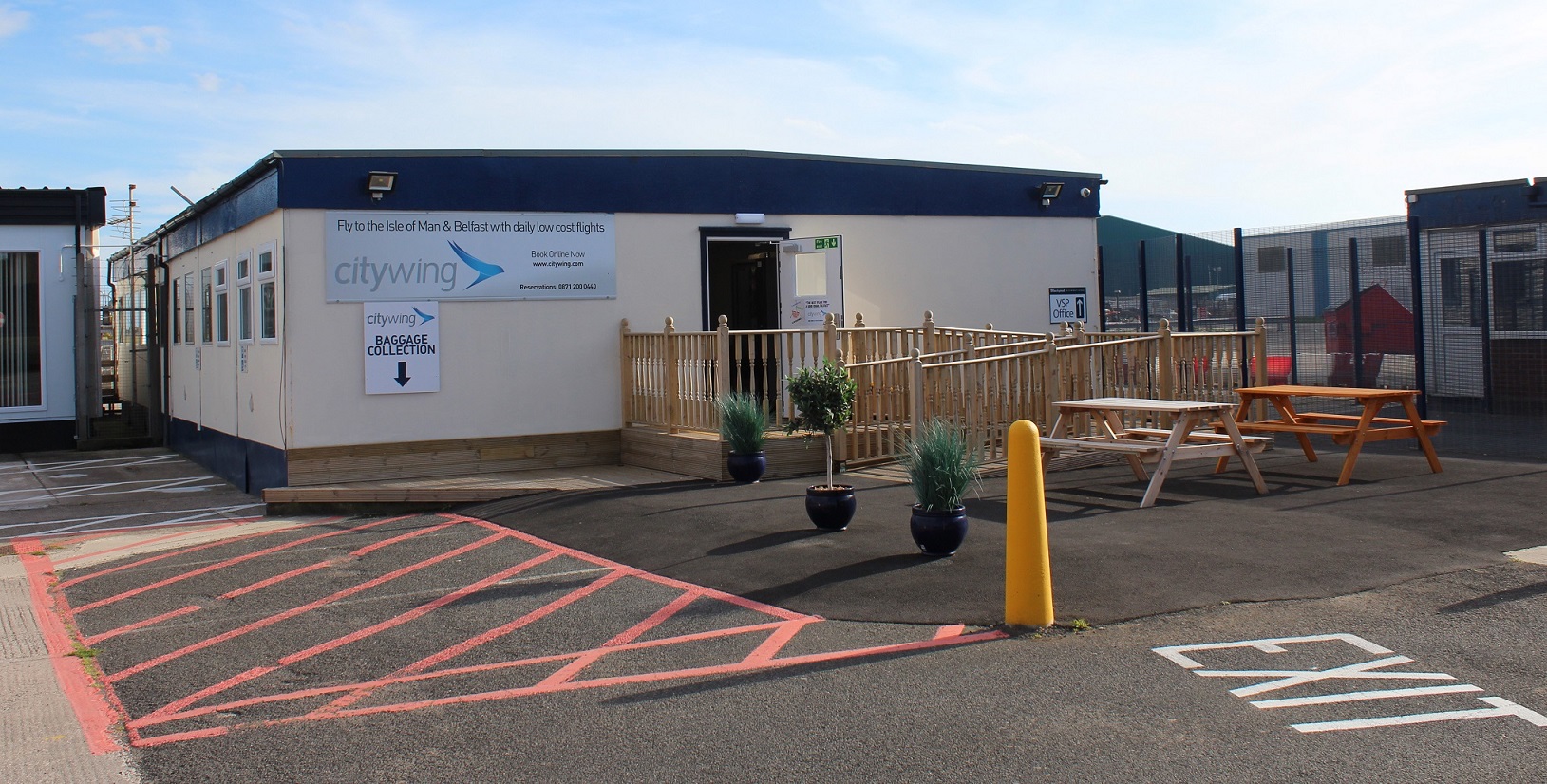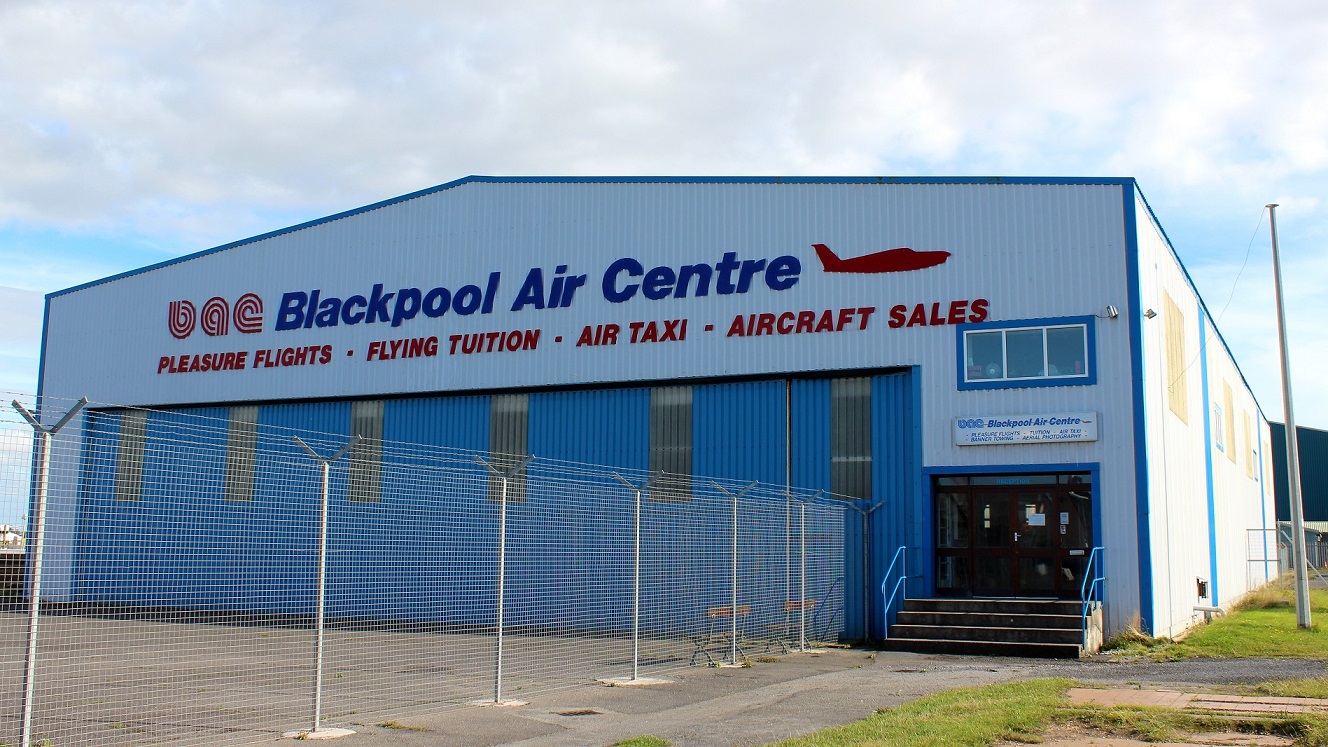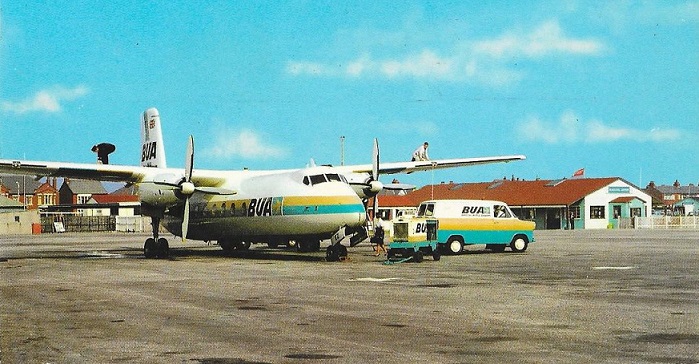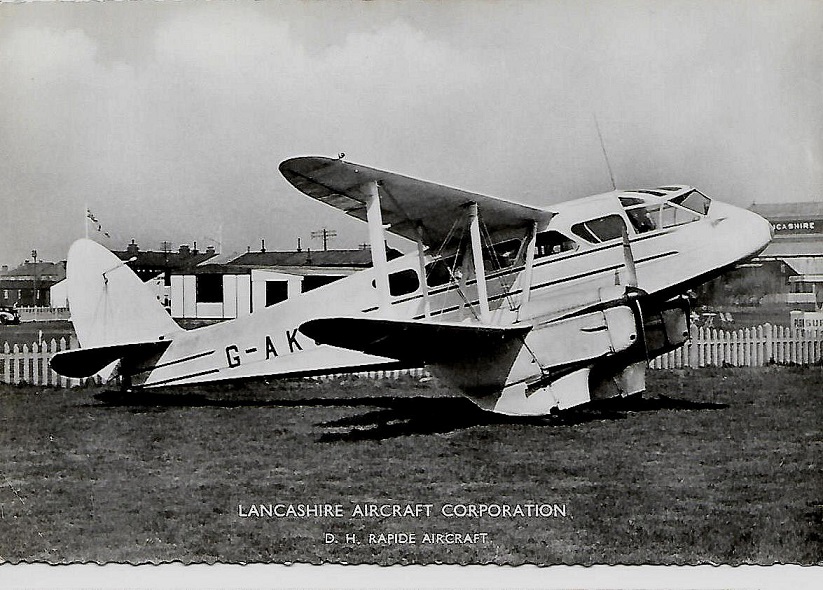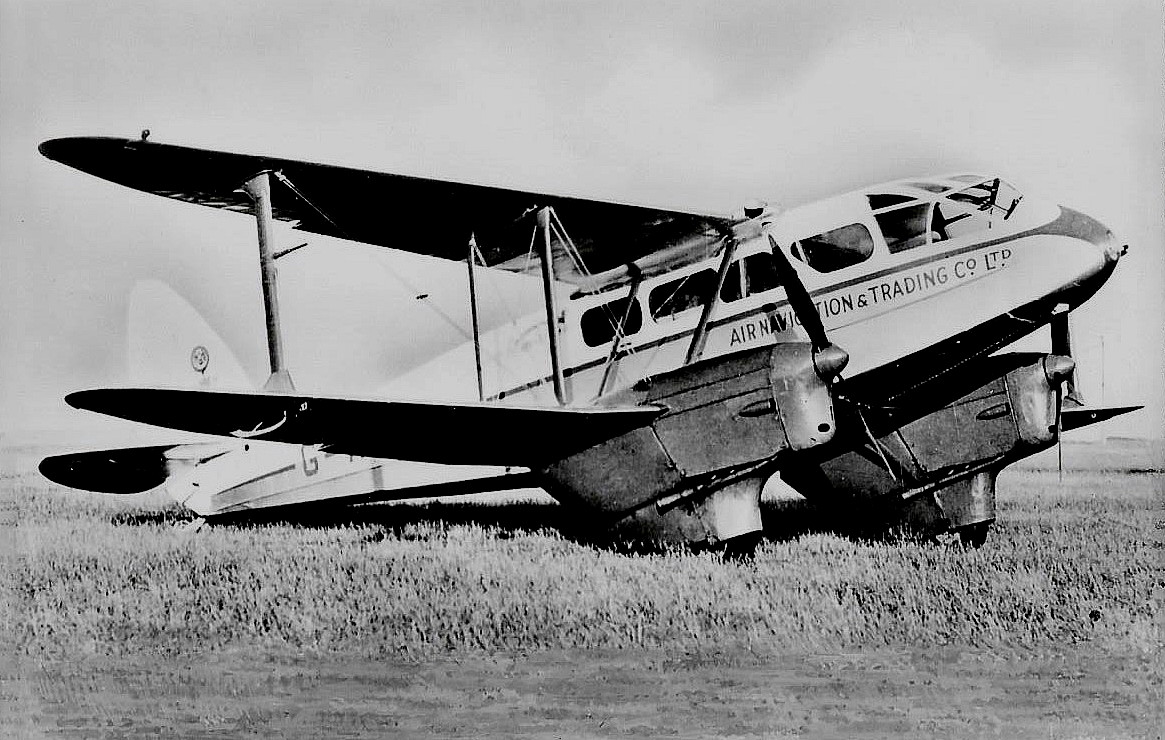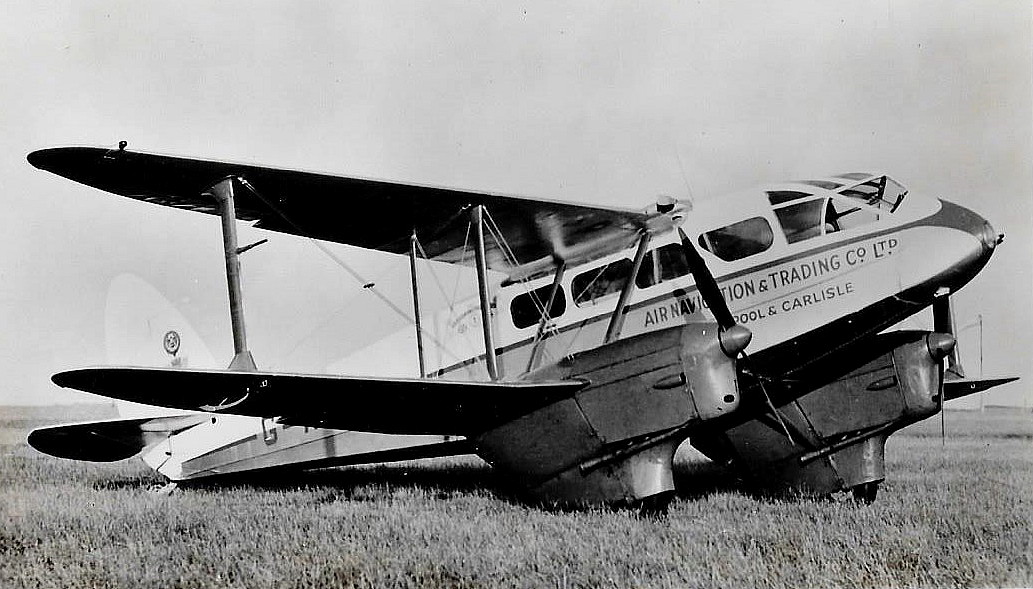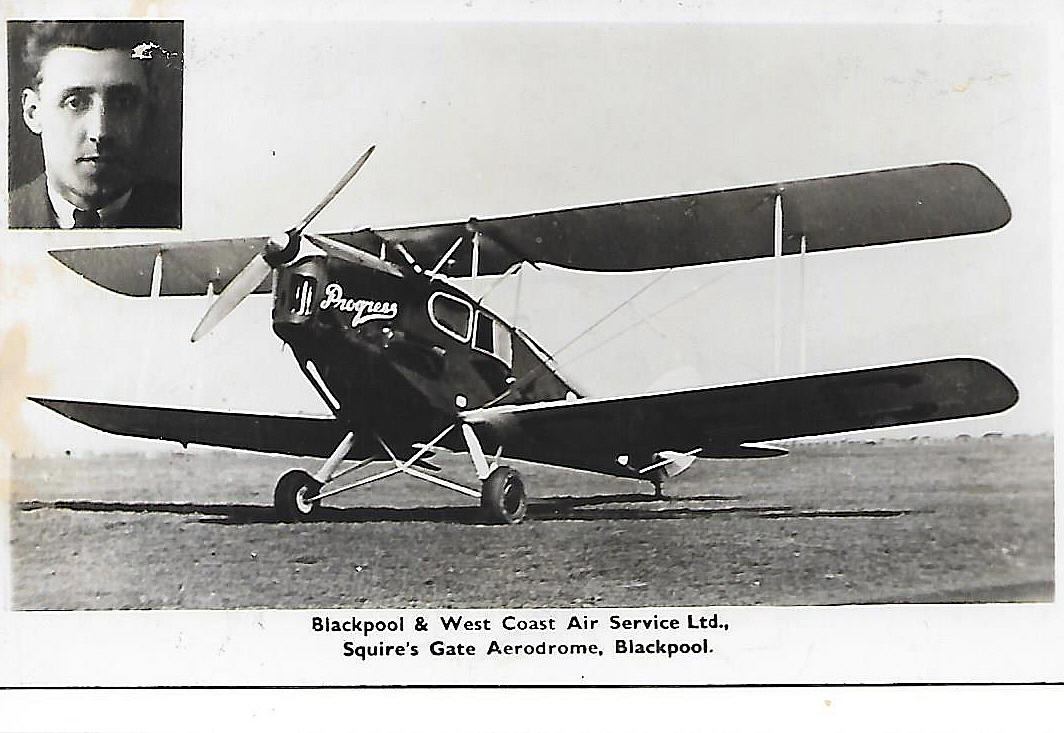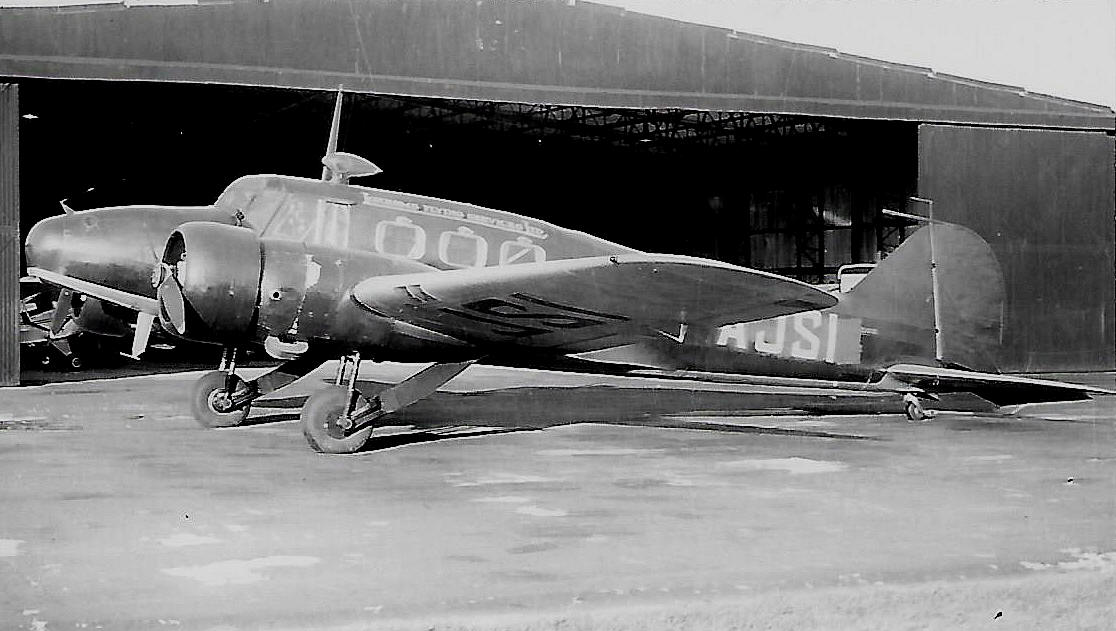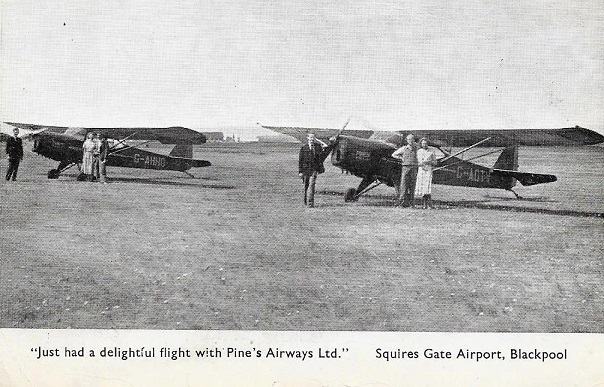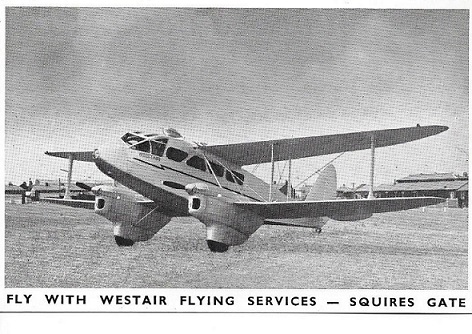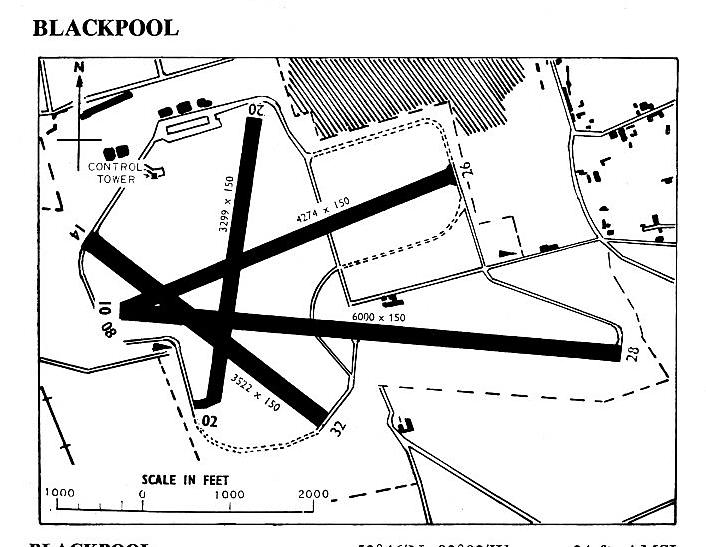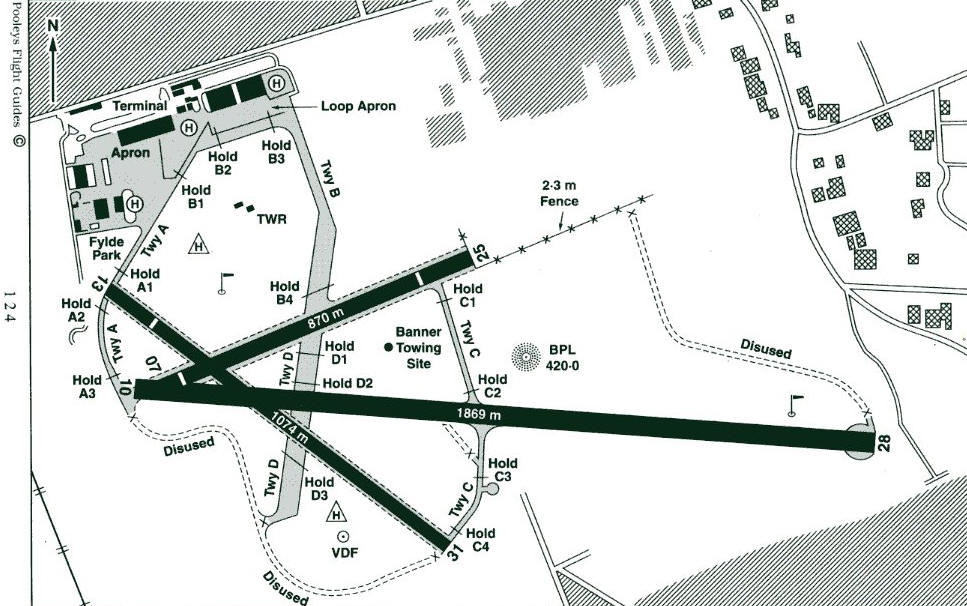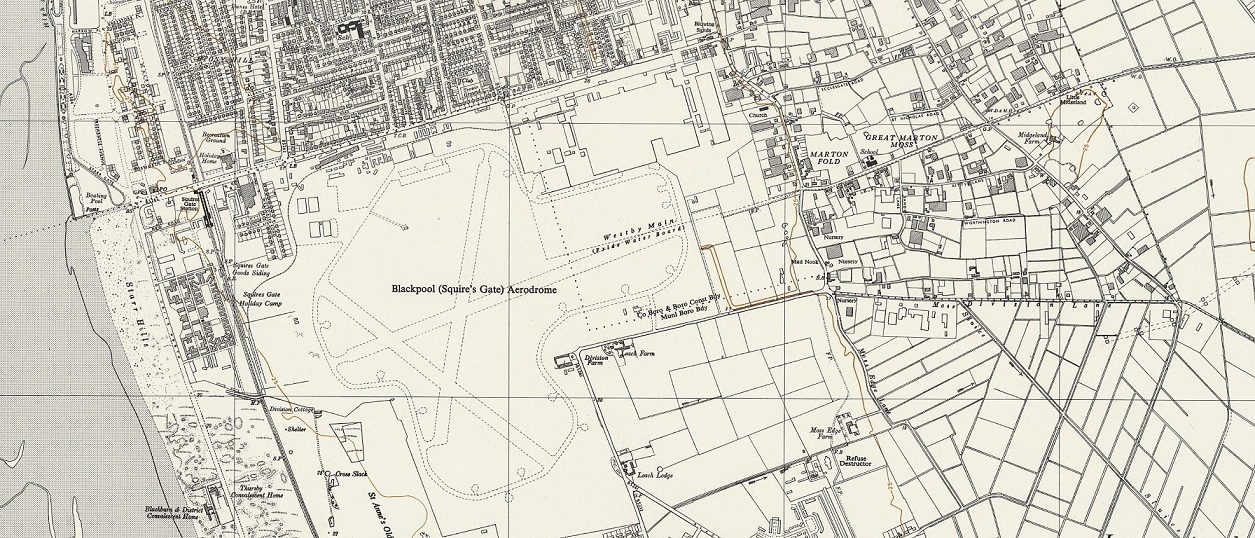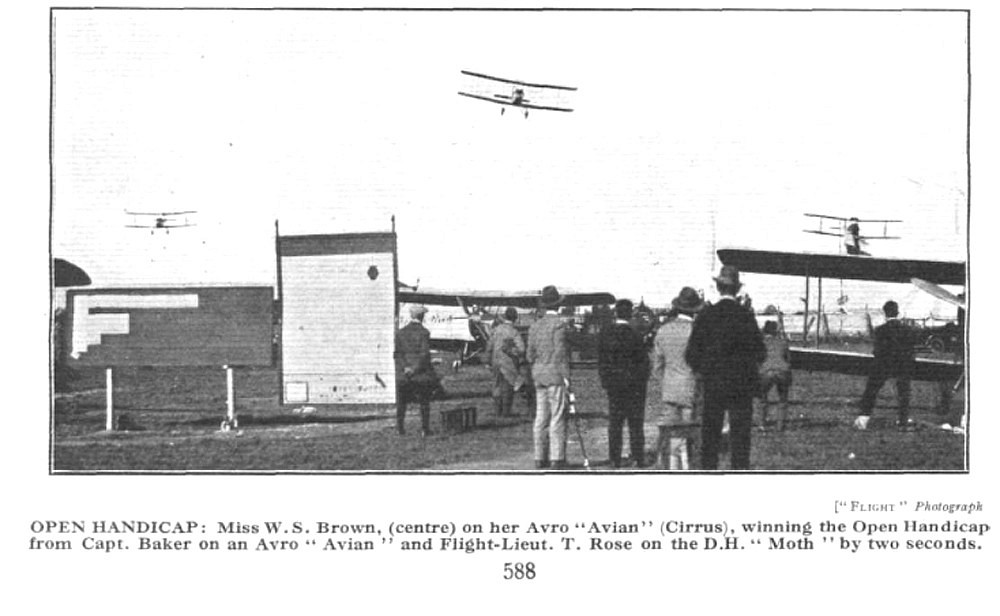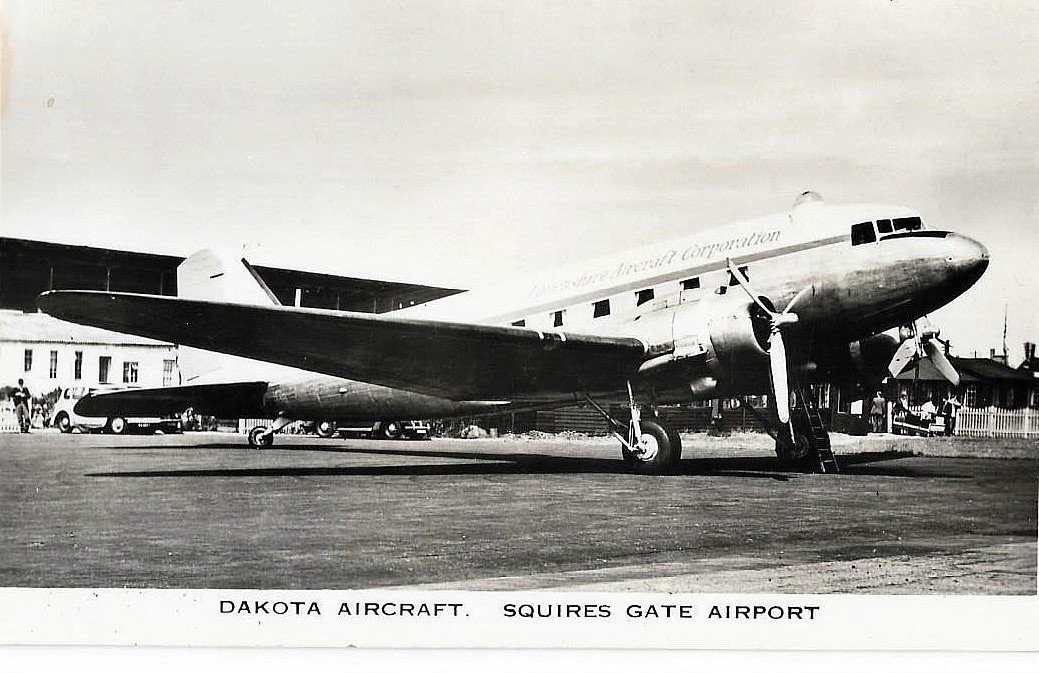Blackpool Squires Gate
SQUIRES GATE: Civil regional airport (Also known as St ANNES)
Note: These four maps and pictures were kindly provided by Mr Michael T Holder. The first picture clearly shows that when Golden Eagle Aviation started operating here in 1919, it really was pretty much nothing more than a field. They also operated from the nearby beach at SOUTH SHORE.
Note: Pictures by the author unless specified.
ICAO code: EGNH IATA code: BLK
2016 PICTURES
Operated by: Post 1919: 1919 to 1920? Golden Eagle Aviation.
1921 & 1922: Blackpool Flying Service
1928 to ?: Lancashire School of Aviation
1933: Blackpool & West Coast Air Services? (Seems unlikely?)
1965: Blackpool Corporation
1980s to 2000: Blackpool Airport Ltd
2004: City Hopper Airports Ltd
Military users: WW2: RAF Coastal Command 17 Training Group
General Reconnaissance School
3 School of GR (Blackburn Bothas in 1940) 1510 Flt (Avro Ansons)
School of Air Sea Rescue (Ansons)
RAF Fighter Command
96 Sqdn & 307 (Polish) Sqdn (Bolton-Paul Defiants)
US Army Air Force liaison.
It seems Spitfires were also based here, (which Squadron?)
ATFERO (1st British Transatlantic Terminal) see notes.
Manufacturing: WW2: Vickers-Armstrong (Vickers Wellington), F Hills & Sons (see notes)
Post 1945: Hawker Aircraft (Hawker Hunters), Lancashire Aircraft Company
Activities: Post 1945: Airline, charter, GA business, private, training and maintenance
British airline users: Pre 1939: Blackpool & West Coast Air Services*, Manx Airways**
Note: This picture was kindly sent, from a postcard, by Mike Charlton.
Post 1945: Air Anglia, Air UK, Autair, British Eagle, British Island Airways, British United Airways, Brymon Airways, Comed Aviation (Comex), Emerald Airways, Irish Sea Airways, Jersey Airlines, Jersey European Airways, Jet2, Lancashire Aircraft Corporation, Manx2, Monarch Airlines, Patrick Aviation, Scottish Airlines, Scottish Aviation, Silver City Airways
Note: In the 1957 The Aeroplane directory, Lancashire Aircraft Corporation are listed as a Scheduled Airline Operator. Their fleet was two Douglas C-47 Dakotas, five DH89A Dragon Rapides and several smaller types. Their main activities were listed as scheduled services, contract and charter flying, ambulance work, pleasure flights, aerodrome catering, specialized operations etc. Their other, and main base, was SAMLESBURY AIRFIELD.
A VIEW IN 1974
It seems well worth quoting this from UK & Eire Commercial Airports, published by Airline Publications & Sales in 1974: "Predominant airline activities here are BIA's Herald services, encompassing five destinations in the U.K. and Ireland with up to some 35 flights daily. As the nearest mainland airport to the Isle of Man, traffic on this over-water holiday route is particularly busy. A number of inclusive tour flights to Palma and other Mediterranean holiday resorts are also operated from Blackpool, throughout the year."
"With flying purely for pleasure comprising a large part of Blackpool Airport's traffic, the visitor at a summer week-end will see few lulls during the 300-movement peak days, and more than 40 light aircraft are based on the airport itself. Not a few visitors will be tempted to avail themselves of the pleasure flights around Blackpool Tower, operated in the summer."
"Blackpool is the main operations and engineering base for British Island Airways 13-strong Herald fleet."
What I found interesting was the observation that in those days the regular I.T. operators were Britannia Airways with Boeing 737s and British Airways with BAC One-Eleven 500s. How things have changed!
LIGHT AIRCRAFT TYPES
Listed in this book for 1974 were the following apparently based here:
Beechcraft singles: Beechcraft 35-33 Debonair, Beechcraft 35 Bonanza (x 2)
Beechcraft twins: Beechcraft B.95 Travel Air
Cessna singles: Cessna 150E, Reims Cessna FA.150K Aerobat, Reims Cessna F.172 (x 3), Reims Cessna FR.172H Rocket, Cessna 175B, Cessna 182E, Cessna 210K Centurion (x 2)
Cessna twins: Cessna 336 Skymaster, Cessna 401B
de Havilland DH83 Fox Moth
DHC-1 Chipmunk (x 2)
Gardan GY-80 Horizon 160
Morane-Saulneir MS.880 Rallye Club
Ord-Hume GY-20 Minicab
Piper singles: Piper PA-22 Colt 108 (x 2), Piper PA-22 Caribbean, Piper PA-22 Tri-Pacer (x 2), PIper PA-24 Comanche (x 2), Piper PA-28 Cherokee 140 (x 7), Piper PA-28R Cherokee Arrow (x 3), Piper PA-32 Cherokee Six 260
Piper twins: Piper PA-23 Aztec 250
SAN Jodel D.117 Grand Tourisme, SAN Jodel DR.1050 Ambassadeur
Tipsy T.66 Nipper
LANCASHIRE AIRCRAFT CORPORATION RAPIDES
These three pictures of L.A.C. de Havilland DH89A Rapides from postcards were also kindly sent by Mike Charlton who has an amazing collection. See; www.aviationpostcard.co.uk
The first picture, G-AHEA (ex RL964), was first registered on the 27th February 1946 to the Lancashire Aircorporation at SAMLESBURY and was operated by them until the 31st March 1954. It then went to R A Peacock (Aviation) Ltd at CROYDON from the 31st March until the 10th November 1954, when it passed to R J Whittemore (Aeradio) Ltd, also at CROYDON from the 18th November 1954 until the 22nd January 1955 - just two months. It was then sold to France as F-BHCF.
Second picture. With this I had a very clever idea, as the G-AK part of the registration is visible, all I had to do was look up the Rapides in the Register and heh presto, all would be revealed. It did not go exactly to plan but I decided to persevere simply because a 'Guide' worth its salt really should contain this sort of information.
The 'G-AKAA to G-AKZZ' part of the British register starts in June 1947 and ends in April 1951. It was a bit of a chore, needless to say, but in many ways so worthwhile - what a picture it paints of the post WW2 aviation scene. For example, to try and trace this aircraft, I noted that in the 'G-AK' section eighty-one Dragon Rapides were registered!
My good friend Mike Charlton informed me that Lancashire Aircraft Corporation operated eight Rapides in the 'G-AK' period: G-AKLA, G-AKNU, G-AKNV, G-AKNW, G-AKOD, G-AKOE, G-AKOY and G-AKRO. So take your pick.
Foreign airline users: Post 1945: Aer Arran, Aer Lingus, citywing, Ryanair
Charter/air taxi:
Post 1919: Monarch Airways?
Note: It seems highly probable that the Monarch Airways GAL Monospar ST-25 Jubilee G-ADYN was employed on pleasure flights. But these operators would almost certainly be looking for other forms of revenue outside of the 'high season'. Therefore, I suspect, that charter and air taxi duties might well have been undertaken. Also, was G-ADYN the only aircraft operated by Monarch Airways?
Post 1945: Air Couriers, Air Navigation and Trading, Britannia Airways, Cumberland Aviation Services, Emerald Airways, Loxhams Flying Services
Pleasure flights: Post 1919: Blackpool Flying Service, Golden Eagle Aviation, Lancashire School of Aviation, Monarch Airways
Note: This picture from a postcard was also kindly sent by Mike Charlton. This Avro 548A, (a three-seater), G-EBIU, was first registered on the 9th May 1924. Presumably to the Lancashire School of Aviation? Later, on the 3rd October 1934 it was registered to Williams & Co, also at SQUIRES GATE. It was damaged beyond repair at RHYL on the 17th May 1937. So, presumably, this picture was taken between 1924 and 1934.
Post 1945: Air Navigation and Trading, Cumberland Aviation Services, Pine's Airways, Thorne Aviation
MORE BLACKPOOL PICTURES FROM MIKE CHARLTON
BONUS PICTURES
First picture:A picture from a postcard of a de Havilland DH83 Fox Moth operated by Blackpool and West Coast Air Service in the 1930s.
Second picture: This picture from a postcard of the five-seater GAL Monospar ST-25 Jubilee G-ADYN raises a question. It appears it was first registered on the 4th February 1936, but the only record I can find was it being registered to Williams & Company, Squires Gate, from the 17th August 1938 until the 13th March 1940. So, was Monarch Airways a trading name for Williams & Company, or, did they acquire it from Monarch Airways?
Probably we shall never know, but it was impressed into RAF service at X9373 on the 19th March 1940. I wonder what the RAF made of it? I suppose it may have been used for communication duties?
Third picture: This picture of the Avro 652A Anson 1 G-AJSI is rather interesting because of the fuselage windows. I'm not at all sure I've seen anything quite like them. Can anybody offer advice?
This Anson (ex-EG135) was part of the Loxhams Flying Services fleet based at SQUIRES GATE from 1946 until 1952, (possibly 1953?), when it appears they then went out of business. It was registered on the 6th May 1947 and was, it appears, operated until the 21st February 1950 - finally being WFU (Withdrawn From Use) at SQUIRES GATE in 1952. During the six or so years they were operating it appears that Loxhams Flying Services fleet, apart from this Anson, included a Miles Gemini, a Miles Aerovan and some Austers. One example, the Auster H-4 G-AIJR, served it seems from Jan 1947 until April 1953.
Fourth picture: This picture is of the two Auster 5 J/1 Autocrats G-AHHO and G-AGTV operated by Pine's Airways, which was a trading name used by (Capt) George Stanley Pine. Typically they both had several owners whilst on the UK register and G-AHHO which was first registered on the 11th May 1946, was registered to Mr G S Pine from the 9th September 1947 until the 26th May 1955. It finally went to Germany in May 1956 as D-EGUT.
G-AGVT, first registered on the 2nd October 1945, was registered to Mr G S Pine also from the 9th September 1947 until the 3rd June 1957. It finally went to Eire as EI-AMK. A bit more research at about the same, and not in any way connected to this picture, had revealed that Pine's Airways was formed by Captain George Stanley Pine the mid 1930s with one, later two, DH84 Fox Moths operating from REST BAY airfield, near Porthcawl in South Wales, (see seperate entry), but WW2 had put an end to that enterprise.
Note: These pictures from postcards were kindly sent by Mike Charlton who has an amazing collection. See; www.aviationpostcard.co.uk
Flying schools: Between the wars: Lancashire School of Aviation
Note: This picture from a postcard was also kindly sent by Mike Charlton.
Post 1945: ANT (Air Navigation and Trading), Blackpool Air Centre, Blackpool and Fylde Aero Club, Border Air Training, Comed Group – Comed Flight Training, Cumberland Aviation Services, Delta Aviation, Northern School of Aviation Flying Club, Pool Aviation (NW), Westair Flying School
Note: In the 1957 The Aeroplane directory, Blackpool and Fylde Aero Club are listed as operating: Six Austers, two Miles Geminis, one Miles Hawk Trainer 3 and four de Havilland DH89A Tiger Moths
1959 ‘snapshot’. Blackpool and Fylde Aero Club, Blackpool and Fylde Aero Group, Northern School of Aviation Flying Club
Gliding: Blackpool & Fylde Gliding Club
Notes: I am uncertain about the exact dates, but it appears that possibly in the 1950s only, the club was based here until the airport started to get busy. They were listed in the 1957 The Aeroplane directory as being based here.
The club then operated out of SALMESBURY and WARTON until, in 1976 they moved to a permanent site near Chipping in the SW area of the Forest of Bowland. The Club then changed its name to Bowland Forest Gliding Club. See seperate entry - BOWLAND FOREST.
Helicopter ops: Bond Helicopters, Helicentre
Maintenance: Post 1945: ANT (Air Navigation and Trading), Westair Flying School
Location: Listed in late 1944 as 1nm SSE of Blackpool but in 2000 2.6nm SSE of Blackpool.
Period of operation: 1919 to 2014. Military from 1944 to 1946
Note: These maps are reproduced with the kind permission of Pooleys Flight Equipment Ltd. Copyright Robert Pooley 2014.
Runways: 1929: E/W 594 grass N/S 731 grass NE/SW 731 grass
1933: Maximum run available given as; 914 grass
WW2: The ‘hard’ runway surfaces in this period were really quite unusual being described as a ‘sand bitumen mix’. I find it hard to envisage exactly what this could have been like to use and to look at. There were however three runways in late 1944 and these were:
02/20 1006x46 hard 08/26 1280x46 hard 14/32 1052x46 hard
I certainly do feel a reluctance to describe a ‘sand bitumen mix’ as being a hard runway as you might easily imagine, but for practical purposes it seems it did the job. Also, and most unusually in UK, (as at ABERDEEN/DYCE), a new main runway was added. In this case in 1952, the 07/25 runway.
Note: This map was kindly provided by Mr Michael T Holder
1959: 02/20 1006x46 hard 07/25 1303x46 hard 10/28 1829x46 hard
13/31 1074x46 hard
1965: 02/20 1006x46 hard 08/26 1303x46 hard 10/28 1829x46 hard
14/32 1074x46 hard
(At some later point 02/20 became disused)
1990/2000: 10/28 1869x46 hard 13/31 1074x23 hard
07/25 870x30 hard
NOTES: It does appear that the famous ‘Air Meeting’ in 1909 was – more or less – on the site of SQUIRES GATE. See BLACKPOOL FLYING SITES for more info.
One thing does seem certain, on the 8th May 1919 Major Horace Scott Shield had obtained approval from the Blackpool Corporation to operate Golden Eagle Aviation Co Ltd from SQUIRES GATE. (It also appears he proposed to fly his Maurice Farman Shorthorn G-EAAZ from Blackpool to Salisbury during the following week). For the very next day Blackpool Corporation had granted the A V Roe company rights to use the sands for joy-rides south of the Victoria Pier.
The Golden Eagle Aviation fleet in 1920 consisted solely of De Havilland DH.6s, presumably of ex-RAF stock, and these were G-EAHD, G-EAHE, G-EAPG, G-EAPH, G-EARJ, G-EARK, G-EARL and G-EARM. Some eight aircraft dedicated to ‘joy-rides’ so perhaps not so surprising that they ceased operations in 1921. The company Blackpool Flying Service filled ‘the gap’ with just two DH.6s G-EAUS and G-EAUT during 1921 and 1922. When, presumably, they went bust too?
NOTHING HAPPENING?
There then appears, after 1922, a period of six years when nothing much seems to have taken place, but, the aerodrome must have remained useable to some extent because in 1928 the Lancashire School of Aviation acquired the lease. They had three Avro 548s, G-EBIT, G-EBIU and G-EBOK for both flying tuition and joy-rides. My thanks to Neville Doyle for this information.
Also from Neville Doyle: “In 1929, the aerodrome was used as an overnight stop in the King’s Cup, with aircraft arriving on July 5th from Bristol and departing on the 6th for Renfrew.” I cannot establish exactly where they came from in ‘Bristol’. WHITCHURCH didn’t officially open until the 31st May 1931 so probably FILTON was the venue? Regarding ‘Renfrew’ in 1929 it appears this was actually MOORPARK, the site became known as RENFREW airport in 1933. “Lancashire School of Aviation Ltd, in conjunction with the Woodford-based Lancashire Aero Club, laid on an air display both days and, on the first day, 2,200 people paid to enter the airfield.”
AN AIR PAGEANT IN 1928
In 2021 Mike Holder found these pictures published in Flight magazine on the 12th July 1928, regarding an Air Pageant held on the 6th July. Possibly lasting for more than one day?
Note: Herr Fieseler went on to design the Fi 156 Storch, first flight in May 1936, a STOL type of exceptional capabilities. Much favoured in Germany during WW2, over 2,900 were built as the French Army and Air Force had a great many examples built locally after WW2.
Note: In the third picture G-EBXX is an Avro 594 Avian III and G-EBSK is a de Havilland DH60X Moth. In the fourth picture G-EBQN can be seen, and that was an Avro 594 Avian I. It appears that some fifty aircraft attended this event, including many RAF aircraft.
A FLYING CIRCUS VISIT
The address given by the Alan Cobham 1932 tour venue for this vicinity, (on the 5th September), was Squires Gate Aerodrome, St ANNES.
BLACKPOOL & WEST COAST AIR SERVICES
*It appears there is some disagreement about where Blackpool & West Coast Air Services operated from. Some reckon STANLEY PARK and others state SQUIRES GATE. My money is now on SQUIRES GATE from where a service linking Liverpool (SPEKE) and RONALDSWAY on the ISLE of MAN commenced on the 3rd July 1933 initially (at least) using the DH84 Dragon G-ACGU and two DH83 Fox Moths G-ACFC and G-ACFF.
Note: In early November 2021 I was very kindly sent a postcard by an anonymous donor. The caption certainly confirms that Blackpool & West Coast Air Services operated from here.
**It also appears that Manx Airway (a subsidiary of Railway Air Services) started operating, from the Isle of Man, (RONALDSWAY), via SQUIRES GATE to Liverpool (SPEKE), on the 31st May 1935.
THE FIRST TRANSATLANTIC AIR TERMINAL
One major claim to fame that SQUIRES GATE has is that is was the very first British ‘Transatlantic Terminal’. It was a military affair operating as part of ATFERO commencing operations in early 1941 using converted RAF Liberators. Called
it seems the ‘Return Ferry Service’ crews were flown across the Atlantic to ferry new aircraft from the USA to the UK. It seems prudent to not confuse the ATFERO service with a similar trans-Atlantic service operating from BURTONWOOD involving USAAF personal only.
A FINAL DEPARTURE
Much has been written and surmised about the death of Amy Johnson, most of it utter rubbish of course. Without any doubt whatsover the best and most thoroughly researched account is by David Luff in his biography, Amy Johnson - Enigma in the Sky. It is well worth reading, not least because it gives a full account of her final departure from here in appalling conditions she was not equipped to deal with - so why did she decide to take-off? We shall never know, except that she was very prone to making very rash decisions - and by any terms a less than average pilot - despite her quite incredible achievements.
It would now appear she was shot down over the Thames estuary, probably by an army anti-aircraft unit, although it appears a Navy vessel was also shooting at her - despite the aircraft clearly having British markings. This was not at all unusual in those days. Army and Navy anti-aircraft crews regularly shot at all aircraft, just for fun mostly it now appears.
F HILLS & SON
Also in 1941 F Hills & Son built a small experimental aircraft, the Bi-Mono which was test-flown here. The idea was to use a second wing which would aid a shorter take-off run and/or provide more lift to carry extra weight. On the 16th July 1941 the Bi-Mono was filmed from a Hudson releasing the upper wing whilst over the sea. The idea was taken really quite seriously and later a Hurricane was adapted but those tests were not a success.
AIR-SEA RESCUE
It wasn’t until early 2012 that I discovered the book Shot Down – and in the drink by Air Commodore Graham Pitchfork, which is perhaps the only authoritative history of Air Sea Rescue services in the UK? It makes for very interesting if often sombre reading. It came as quite a surprise to discover that prior to WW2 the subject of ditching or baling out over sea, and then being rescued, (especially for military aircrews), was very much hit-and-miss affair – and usually a miss. In fact the first ever, (probably in the world?), School of Air Sea Rescue was formed here in 1943 with three Ansons. Today one might regard with some astonishment just how tardy the ‘official’ response was considering that in 1941 the loss of aircrews at sea averaged 200 lives per month!
WHAT'S IN A NAME?
In 1975 this airfield was still referred to as SQUIRES GATE (BLACKPOOL) on one listing of UK “Operational Aerodromes” It appears 3,046 Wellington bombers were produced here, here being both STANLEY PARK and SQUIRES GATE. The time period for this production period being August 1940 to October 1945 according to at least two experts. I find this sort of number of aircraft, (especially such relatively large aircraft), hard to envisage. But there’s another aspect to this that I fail to understand; considering that the Wellington was pretty much obsolete by 1942, why were they still being produced here in 1945? To see what one independent researcher has discovered about spurious and totally wasteful Wellington production - see SMITHS LAWN in SURREY.
BECOMING A CIVIL AIRPORT AGAIN
It appears that SQUIRES GATE was designated as a civil airport in 1949, (others say since 1946), the original wooden terminal building lasting till 1995. In 1959 the main operator here was Silver City Airways with scheduled services to the Isle of Man and holiday season flights to Jersey, Belfast (NUTTS CORNER), and Ostend. Also, and in conjunction with Aer Lingus, a Dublin service was operated.
LANCASHIRE AIRCRAFT CORPORATION
Note: This picture from a postcard was kindly sent by Mike Charlton who has an amazing collection. See, www.aviationpostcard.co.uk
This picture is I think of considerable interest as it appears that for such a grand name, the company started out in 1948 with just the Percival Proctor III G-ALCK. The Douglas C-47B being added in 1952. Their aims in business initially were air freight, business and pleasure flights and aerial photography. And, they never bothered to upgrade G-AMWX to the civilian DC-3 standard.
However, it appears that from 1955 they were offering summer scheduled services to the Isle of Man, and in 1956 services to Birmingham and Leeds commenced. Of interest it appears that the Skyways company was once a subsidiary!
THE HAWKER ERA & OTHER MANUFACTURING
The Hawker Aircraft (Blackpool) operation, from 1953 to 1957 using the old Vickers factory was quite substantial with 122 of two Hunter variants being produced. At the other end of the spectrum the Lancashire Aircraft Corporation built two Edgar Percival E.P.9 Prospector types here, G-APWX and G-APWY which were then called the Lancashire Prospector before the company moved to SALMESBURY.
FLYING CLUBS & SCHOOLS
In 1959 the resident clubs included the Northern School of Aviation Flying Club and the Blackpool and Fylde Aero who between them operated; The Auster J/4 G-AIJR, two Auster Autocrats G-AHSS and G-AIGD, DH Moth Minor G-AFNG, Miles Hawk Trainer G-AKRH and the Thruxton Jackaroo G-AOIO.
HELI 2000: It appears that a helipad used in 1998, on an apron situated adjacent to Morrison’s store on the N side of Blackpool airfield.
James Mac Seoras-Blair
This comment was written on: 2018-12-26 18:30:51I have a photo of a Rapide belonging to B&W coast Air services operating from Squires Gate airfield. I wish to share it with you. If I had an address to send it, then I shall. Regards James
Dick Flute
This comment was written on: 2018-12-27 22:17:54Dear James, my address is: 57 Drayton Green, Ealing, London W13 0JE. Please attach the picture to a stout piece of card and give a return address. Best regards, Dick
mike Noakes
This comment was written on: 2020-09-20 20:48:23The original Hangar at St Just Airport (Lands End) came from Squires Gate. St Just opened 1937 for Channel Air Ferries service to the Scilly Islands using DH84 Dragon aircraft. The hangar measured c. 100 ft x 40 ft and was mainly asbestos sheeting and remained at St Just until the 1980's. Any information regarding its location etc at Squires Gate before 1937 would be gratefully received. Was Squires Gate 'ungraded' at about this date necessitating the removal of the hangar. Seems a long way for it to travel, for re-erection, at that time - although the owner of St Just (Olley) had connections at Squires Gate. DH 84's had to fold their wings to park up inside the hangar and the later DH 89's had no chance!
We'd love to hear from you, so please scroll down to leave a comment!
Leave a comment ...
Copyright (c) UK Airfield Guide

















